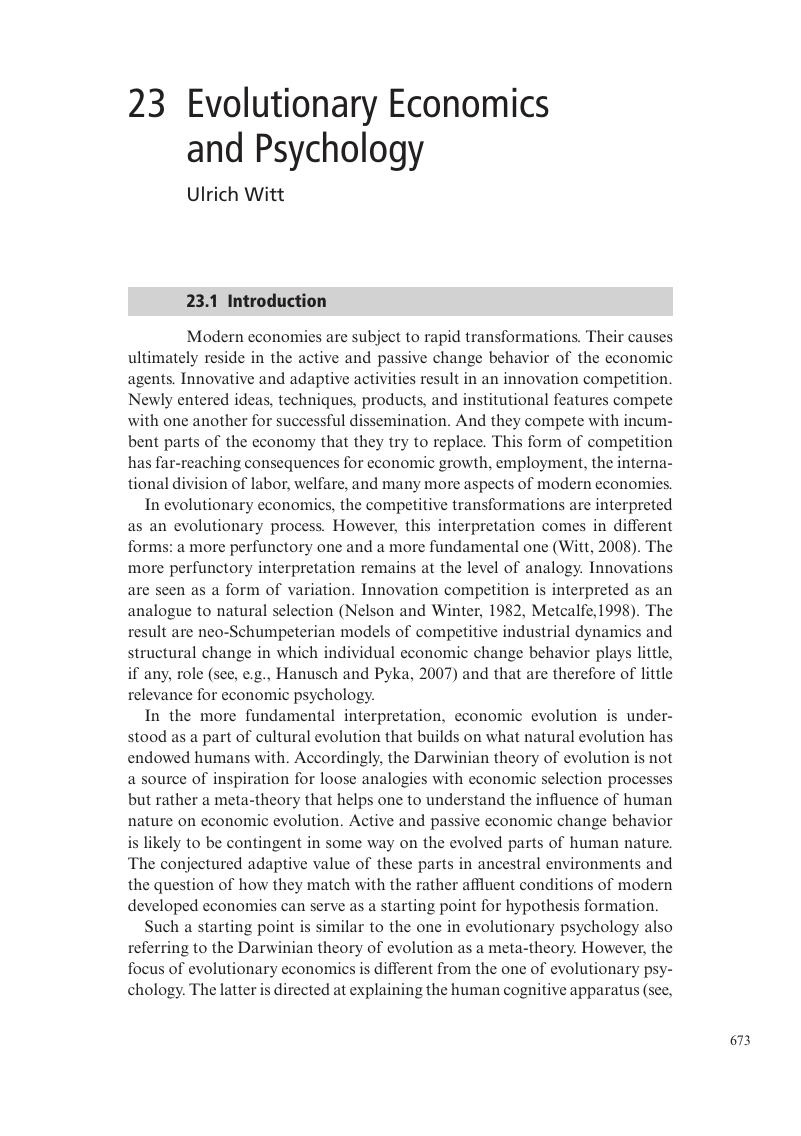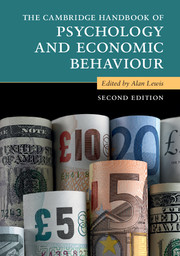Book contents
- The Cambridge Handbook of Psychology and Economic Behaviour
- The Cambridge Handbook of Psychology and Economic Behaviour
- Copyright page
- Dedication
- Contents
- Plates
- Figures
- Tables
- Notes on Contributors
- Introduction
- Part I Theory & Method
- Part II Finance
- Part III Private Sector Consumer Behaviour and the Firm
- Part IV Public Sector Consumer Behaviour
- Part V Environment
- Part VI Biological Perspectives
- 21 Neuroeconomics
- 22 The Importance of Evolutionary Psychology for the Understanding of Economic Behavior
- 23 Evolutionary Economics and Psychology
- Part VII New Horizons
- Index
- References
23 - Evolutionary Economics and Psychology
from Part VI - Biological Perspectives
Published online by Cambridge University Press: 01 February 2018
- The Cambridge Handbook of Psychology and Economic Behaviour
- The Cambridge Handbook of Psychology and Economic Behaviour
- Copyright page
- Dedication
- Contents
- Plates
- Figures
- Tables
- Notes on Contributors
- Introduction
- Part I Theory & Method
- Part II Finance
- Part III Private Sector Consumer Behaviour and the Firm
- Part IV Public Sector Consumer Behaviour
- Part V Environment
- Part VI Biological Perspectives
- 21 Neuroeconomics
- 22 The Importance of Evolutionary Psychology for the Understanding of Economic Behavior
- 23 Evolutionary Economics and Psychology
- Part VII New Horizons
- Index
- References
Summary

- Type
- Chapter
- Information
- The Cambridge Handbook of Psychology and Economic Behaviour , pp. 673 - 694Publisher: Cambridge University PressPrint publication year: 2018
References
23.7 References
- 1
- Cited by



